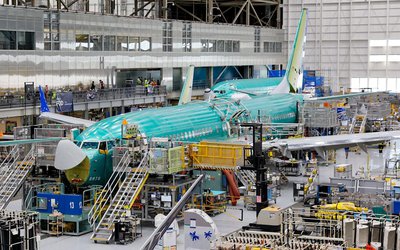
I recently spotted construction going on across from Thankot as I was traveling there. Upon arriving, I noticed a sizable construction crew digging a tunnel. After asking the locals, I learned that the construction was taking place near the entrance to the Thankot-Nagdhunga Tunnel, Nepal's second motorable tunnel since the 1930s' Churia Tunnel, and that it was almost finished thanks to Japanese assistance.
Four things have always stood out to me as a young Nepali. B.P. Highway, Koteshwor-Suryabinayak Road, Maharajgunj Hospital (TU Teaching Hospital), Kanti Hospital, and Kulekhani Reservoir. These are the most prominent examples of contemporary infrastructure that have captured everyone's attention. All those massive infrastructures built with Japanese assistance serve as reminders of Nepal's modernization progress.
Japan has contributed to a variety of humanitarian, medical, and developmental aid to rebuild school, roads, hospitals, and drinking water projects, as well as assistance with daily living in earthquake-affected areas.
One of the nations that have provided Nepal with a sizable quantity of funding is Japan. Since the two countries established diplomatic relations on September 1st, 1956, Japan has supported Nepal with various packages to improve the quality of life for Nepalese citizens. This long and deep history between Japan and Nepal began with the visit of a Japanese monk, KAWAGUCHI Ekai, to Kathmandu in 1899.
Japan is the seventh nation to have established diplomatic ties with Nepal, and the two countries have partnered on a few global issues.
Japan has consistently supported and influenced Nepal in cultural, social, developmental, and economic aspects, despite the disparities in their levels of development. In fact, Japan is among the top donors to Nepal along with the United States, the United Kingdom, the European Union, India, and China.
Even though Nepal is landlocked, and Japan is sea-locked, their relationship goes beyond diplomatic connections. For more than 65 years, Japan has supported Nepal financially and technologically, significantly improving the quality of life for Nepalese citizens. They have had a positive impact on the everyday lives of Nepalese individuals. As a young Nepali, I appreciate Japan's tolerance and blending of culture, traditions, and lifestyles. The younger generations of urban youth in Nepal, including myself, have started to watch Japanese films and enjoy Japanese cuisine.
Following the 2015 earthquake, Japan rebuilt numerous schools, bridges, and Bir Hospital, Nepal's oldest public hospital, in a brand-new, contemporary structure. Japan has shown its readiness to assist Nepal whenever it faces a serious catastrophe by providing life-saving medications, medical supplies, and COVID-19 vaccines.
Japan generously contributed to Nepal's recovery after that country was hit by the COVID-19 Pandemic and a severe earthquake in 2015 in Nepal. Japan has given Tribhuvan International Airport the most innovative equipment, including a radar system, to modernize Nepal's aviation industry.
Japan has extended their support beyond infrastructure to include the energy and water industries. One of Japan's most significant contributions is the Kulekhani Hydropower Project. The completion of this project has reduced Nepal's reliance on fossil fuels by enabling the people of Nepal to meet their energy needs. Similarly, the completion of the Melamchi Drinking Water Project has provided the people of Nepal with access to enough supplies of clean, safe water in their homes.
Japan has provided assistance in the fields of agriculture, health care, and education. The "One Village, One Product" campaign strategy from Japan has assisted rural regions in creating sustainable enterprises centered on locally grown goods, enabling the villagers to become independent, effective, efficient, and economically self-sufficient through their livelihood ventures. Their assistance in encouraging the production of Mandarin Oranges (Junar) and trout fish has given the farmers new chances to combat poverty.
Japan places a high value on education and has made it more feasible for Nepali students to pursue education in Japan at a reasonable cost by implementing comparable importance toward education in Nepal. Through the scholarships they offered Nepalese people have been able to enhance their knowledge and abilities in a variety of disciplines, producing skilled young people who will eventually help the nation's independence.
Overall, Nepal has developed significantly because of Japan's help. Japan has been assisting Nepal in laying the groundwork for long-term sustainable growth and resolving issues that have been bothering the populace daily. They can help Nepal today so that it might have a great future. Japan has been awarding short- and long-term scholarships to Nepalese university scholars, government employees, and other students to enhance their human resources; Japan has also been providing Nepalese non-governmental organizations and local governments, which are being used to help improve the living conditions of people of Nepal.
Japan and the Japanese people have given Nepal a lot. Buddhist ties between Nepal and Japan have been strengthened since renowned Japanese architect Prof. Kenzo Tange was tasked with creating a master plan for the orderly development of Lumbini. In 1978, the Nepali government approved the Lumbini Development Master Plan. Nepal currently maintains diplomatic ties with 180 nations, and we cannot compare to any other nation in terms of the support provided to upgrade Nepal's infrastructure to improve the lives of Nepalese citizens. This is the 121st year since the first eight Nepali students were dispatched to Japan for their studies. However, many young Nepali are still aspiring to pursue their education there.
Parmita Shrestha is a young Nepali student working as an intern for New Spotlight.
- NAGDHUNGA TUNNEL BREAKTHROUGH: Significant Milestone
- Apr 30, 2024
- Japanese Film Festival And Japan Day In Kathmandu
- Apr 09, 2024
- JENESYS Friendship Ties Program: Learning From Japan
- Feb 05, 2024
- 78th Hiroshima Day: A Look Back
- Aug 08, 2023
- JDS : Japan’s Support To Nepal
- Jul 31, 2023














